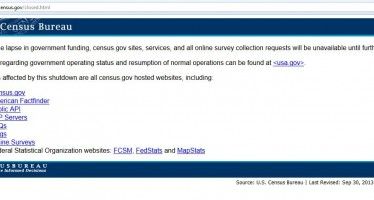Occupy-style rhetoric used to frame CA drought
 Gov. Jerry Brown’s announcement of mandatory water cutbacks led to news coverage of the disparities in water usage between very rich neighborhoods and everywhere else. In San Diego, this instantly prompted angry comments on social media about Rancho Santa Fe, judged last year to be the biggest per-capita residential user in California. Last summer, homes in Rancho Santa Fe and other wealthy areas served by the Santa Fe Irrigation District averaged using 610 gallons per person per day — more than five times the Southern California residential average of 119 gallons.
Gov. Jerry Brown’s announcement of mandatory water cutbacks led to news coverage of the disparities in water usage between very rich neighborhoods and everywhere else. In San Diego, this instantly prompted angry comments on social media about Rancho Santa Fe, judged last year to be the biggest per-capita residential user in California. Last summer, homes in Rancho Santa Fe and other wealthy areas served by the Santa Fe Irrigation District averaged using 610 gallons per person per day — more than five times the Southern California residential average of 119 gallons.
News that Rancho Santa Fe and other wealthy enclaves with reputations as water hogs will get hit with the maximum 36 percent reductions hasn’t appeared to reduce the anti-elite anger. Now along comes a New York Times story that explicitly frames the issue in Occupy vs. 1 percent terms.
COMPTON, Calif. — Alysia Thomas, a stay-at-home mother in this working-class city, tells her children to skip a bath on days when they do not play outside; that holds down the water bill. Lillian Barrera, a housekeeper who travels 25 miles to clean homes in Beverly Hills, serves dinner to her family on paper plates for much the same reason. In the fourth year of a severe drought, conservation is a fine thing, but in this Southern California community, saving water means saving money.
The challenge of California’s drought is starkly different in Cowan Heights, a lush oasis of wealth and comfort 30 miles east of here. That is where Peter L. Himber, a pediatric neurologist, has decided to stop watering the gently sloping hillside that he spent $100,000 to turn into a green California paradise, seeding it with a carpet of rich native grass and installing a sprinkler system fit for a golf course. But that is also where homeowners like John Sears, a retired food-company executive, bristle with defiance at the prospect of mandatory cuts in water use. …
David L. Feldman, who studies water policy at the University of California, Irvine, said a big risk for state water regulators would be if the public concluded that water-conservation policies were “falling disproportionately on those who are less able to meet those goals.”
But what the NYT story doesn’t capture is that the water issue appears to have more potential to have genuine populist consequences than Occupy, which never became a true mass movement. The more Californians are reminded that rich estates use more water on their lawns every day than do entire apartment buildings, the more irate they’re likely to be. That includes the middle-class families that the Times’ story didn’t cover.
Look for lawmakers with populist streaks to start proposing related legislation any day now.
Chris Reed
Chris Reed is a regular contributor to Cal Watchdog. Reed is an editorial writer for U-T San Diego. Before joining the U-T in July 2005, he was the opinion-page columns editor and wrote the featured weekly Unspin column for The Orange County Register. Reed was on the national board of the Association of Opinion Page Editors from 2003-2005. From 2000 to 2005, Reed made more than 100 appearances as a featured news analyst on Los Angeles-area National Public Radio affiliate KPCC-FM. From 1990 to 1998, Reed was an editor, metro columnist and film critic at the Inland Valley Daily Bulletin in Ontario. Reed has a political science degree from the University of Hawaii (Hilo campus), where he edited the student newspaper, the Vulcan News, his senior year. He is on Twitter: @chrisreed99.
Related Articles
Will other GOPers who backed ‘cap and trade’ face fallout?
Chad Mayes of Yucca Valley is out as Assembly Republican leader, replaced last week by Assemblyman Brian Dahle of Bieber.
Shutdown blacks out U.S. Census site
It's taken a week, but I finally was affected by the federal government “shutdown” (which actually only closes, temporarily, 17
Senate Passes Corrections Contracts
Katy Grimes: Described as “Short Time Gain – Long Time Pain” by Republican Sen. Bob Dutton, the six union deals




